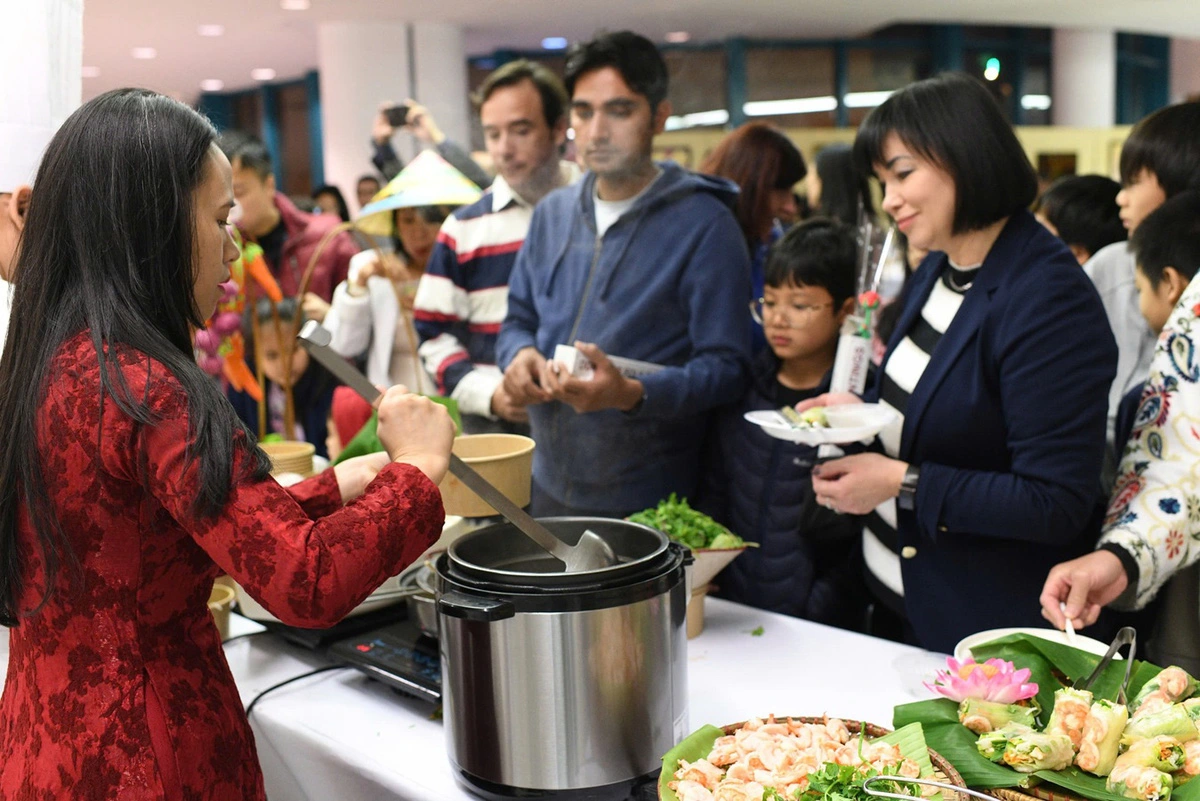|
A
century has passed since French archaeologists found relics that dated
from 2,500 – 3,000 years ago in the Sa Huynh sand dune (in Duc Pho
District,
Quang
Ngai
Province
). New
archaeological sites of the Sa Huynh culture have been continuously
discovered and many diversified objects have been found…
Imprints of a well-known
culture
In 1909, it was
written in the yearbook of the
French
School of the
Far East that a store of about 200 jars had been found lying
barely under the surface of a sand dune in Sa Huynh coastal area. To date,
hundreds of objects of this culture have been found along the coastal
provinces in Central Vietnam, from
Quang
Binh
Province to
Binh
Thuan
Province
and some neighbouring
areas. Excavations have been carried out over a large area, including the
Central coastal area, Tay Nguyen (the Central Highlands) and eastern
South Vietnam
. The greatest number of
excavations were conducted in Quang Ngai Province, including the
excavation in Ma Vuong Mound (Pho Khanh Commune, Duc Pho District) in
1976; in Oc Hamlet (Ly Son District) in 1998; in Chinh (Ly Son District)
in 2000; in Binh Dong Commune (Binh Son District) in 2005 and most
recently in Duc Thang Commune (Mo Duc District) in 2009. The objects found
from these excavations allow archaeologists to reconstruct the Sa Huynh
cultural space that is much larger than the French archaeologists’
original imagination. The excavations have showed the existence of an
early cultural period, the precursor of classical Sa Huynh that has been
named the pre-Sa Huynh period or early Sa Huynh.
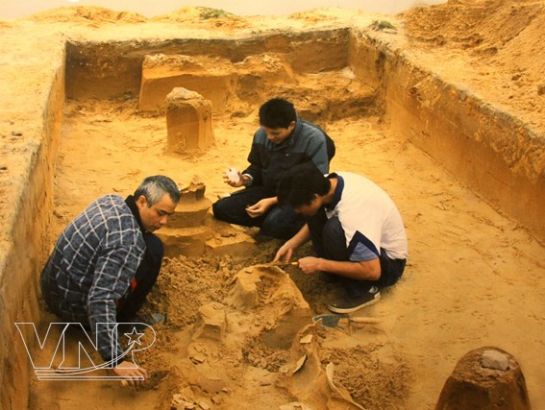
At
an excavation site in Binh Chau,Quang Ngai Province.
|
|
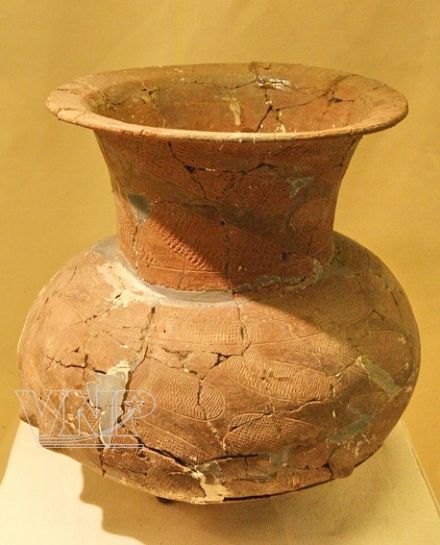
A coloured ceramic vase dates from 2,500 –
3,000 years ago.
|
|
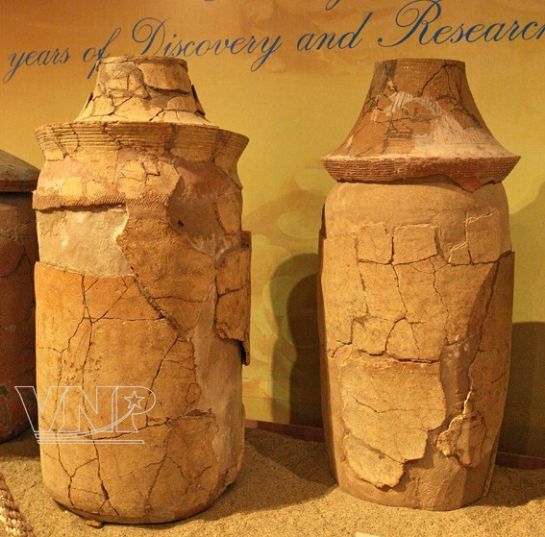
The ceramic burial jar of Sa Huynh Culture
dates from 3,000 – 4,000 years ago.
|
|
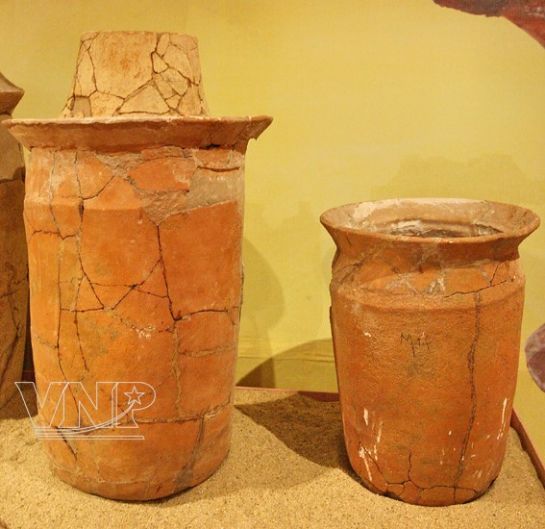
The ceramic burial jar of Sa Huynh Culture
dates from 2,000 – 2,500 years
ago.
|
|
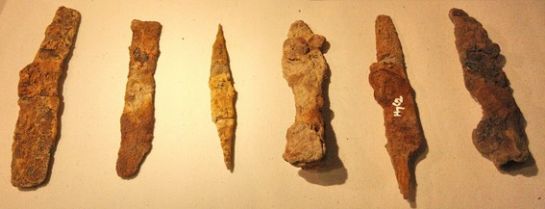
Steel axes of Sa Huynh Culture date from
2,000 – 2,500 years ago.
|
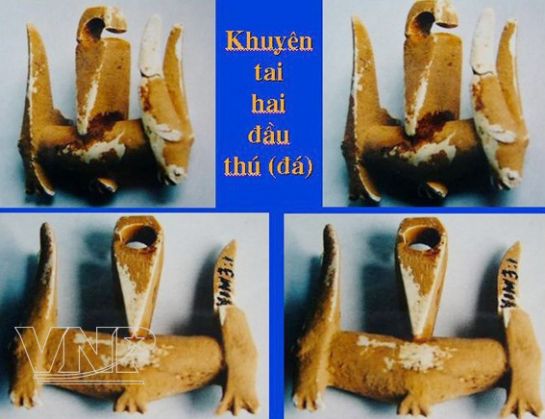
|
|
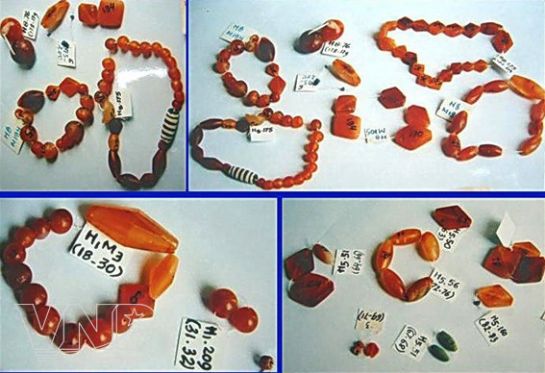
Animal-headed ear-rings and necklaces belonging
to Sa Huynh Culture
date from 2,000 – 2,500 years ago.
|
|
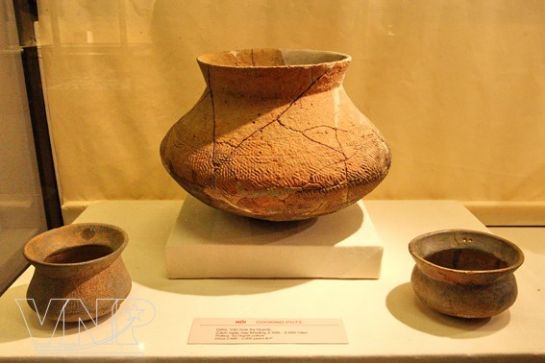
A ceramic pot of Sa Huynh Culture dates from
2,000 – 2,500 years ago.
|
|
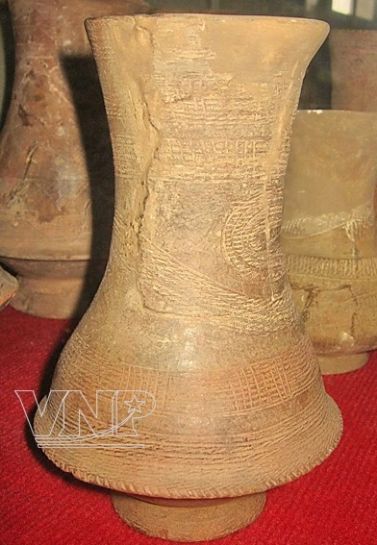
A ceramic vase with string woven designs
dates from 2,000 – 2,500
years ago found at the Bai Coi
excavation site in Ha Tinh Province.
|
|
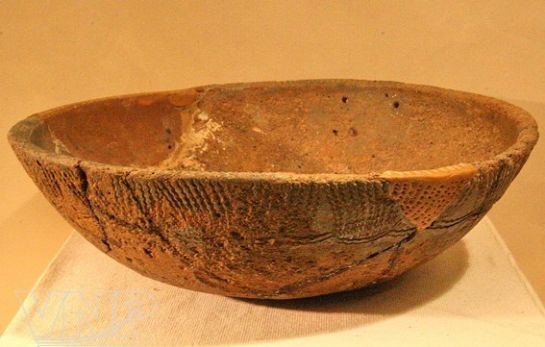
A ceramic bowl of Sa Huynh Culture dates
from 2,000 – 2,500 years ago.
|
|
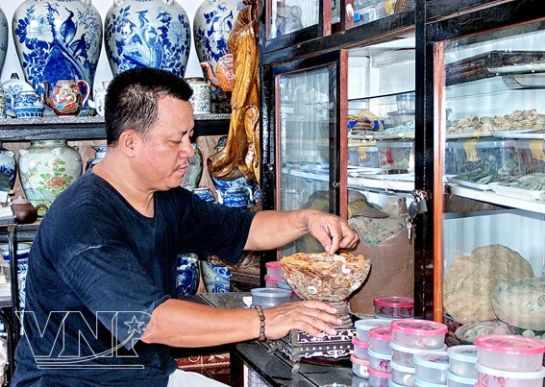
Physician
Lam Vu Xenh in Binh Son ( Quang
Ngai
Province )
has a collection of 300 Sa Huynh
artifacts.
|
|
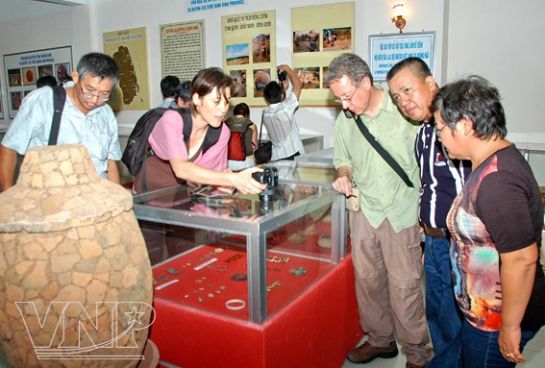
Foreign tourists are interested in seeing Sa
Huynh artifacts
displayed at a showroom in Quang
Ngai Province.
|
This scientific
discovery enables a confirmation that the Sa Huynh culture, discovered by
the French and defined as having an indigenous origin, has developed in a
region stretching from Quang Binh to the eastern
South Vietnam, the Central Highlands, some
islands on the central coastal area and perhaps in other places in
Indochina. By 2009, over 80 Sa
Huynh culture sites had been discovered and researched. The relics and
artefacts were scattered densely and related to other cultures of the same
time. The Sa Huynh culture is connected with other cultures but it neither
mixes with them nor comes from other areas. Results of the excavations and
studies conducted by French and Vietnamese archaeologists provide basic
features of the life, daily activities and the religious believes of the
Sa Huynh residents who lived in groups and knew how to use tools to make
jewellery ornaments and weapons made of stone, animal bones, glass,
agate, pottery, bronze and iron. They also caught fish, embellished
themselves with jewellery, designed utensils and created many unique
patterns of high aesthetics, especially on pottery wares.
New
discoveries and research
In the
1990s the discovery and excavation of the relic complex of Giong Ca Vo –
Giong Phet in Can Gio District, Ho Chi Minh City shocked archaeological
and historical circles. The relics included large grounds of burial jars
with objects diverse in materials and types. The objects included iron
swords and knives, ear rings, strings of glass beads, strings of golden
beads, golden ear rings, etc. In late 2008 and early 2009 during an
archaeological excavation at Bai Goi relic site in Xuan Vien Commune, Nghi
Xuan District of Ha Tinh Province, many typical objects of the Sa Huynh
culture, such as ear rings featuring two headed animals, burial vases,
vertical burial pots and burial jars together with many pottery wares,
such as jars, pots, bowls and hat’s caps, and three-coloured ear-rings
made of glass and terracotta, especially an apricot-shaped burial jar were
found. These items show that although the Sa Huynh culture has been
discovered and researched, it still contains unexpected things which are
not only interesting but also challenge the researchers and scientists at
home and abroad.
In recent
years many archaeological excavations have been carried out to learn about
the relationship between the Sa Huynh and Champa cultures. In many relic
sites, archaeologists have found ceramic pieces with characteristics of
both Sa Huynh and Champa ceramics. These are important sources that prove
the development process from the Sa Huynh culture to the Champa culture.
Besides, from the ancient bibliographies, the research has also provided
some “Sa Huynh factors” in the Champa society and culture.
On the basis of
the archaeological documents, it can be said that the Champa State was the succession of the Sa
Huynh culture. It was formed on the Sa Huynh culture foundation under the
impact of the external cultural factors of Dong Son – Ancient Viet,
China and
India.
All
objects found and our knowledge about the Sa Huynh residents and culture
over the past 100 years are enough to help imagine the Sa Huynh residents
and their culture, from origin to stages of development, from relics and
artefacts to cultural identities.
Story: Nguyen Dang
Lam – Vinh Hung
Photos:
Vietnam
Museum of History – Vu Hieu – Bui Van Liem –
Thanh Long
|















